© 2024 Qualitetch Ltd. Site by i3MEDIA
Your total metal component manufacturing solution
Thanks to the many useful properties it possesses. Here at Qualitetch, we utilise a number of steel variants, including both mild steel and carbon steel, to harness the durability and resilience of the metal.
Etched steel parts and components are great for a multitude of industries and sectors, including automotive, aerospace, electronics and telecommunications, and can be found in everyday items and objects in the home, on the road and in the workplace.
Mild steel is also known as carbon steel, spring steel and includes brand names such as Sandvik steel and Uddeholm.
Thanks to the incredibly accurate results and speed of the process used, we can offer our customers a range of commercial products with a low margin of error and high turnaround on orders. Please contact us today on 01354 658787 to find out more.
Photo etching, also known as chemical etching or metal etching, is a versatile and precise manufacturing process used to create intricate designs on various metals. Mild steel and carbon steel are two commonly utilized materials in photo etching due to their favorable characteristics. In this discussion, we will explore the properties of mild steel and carbon steel, the photo etching process, and the applications of this technique.
Mild Steel:
Mild steel, also known as low carbon steel, is a widely used material in photo etching. It is primarily composed of iron and carbon, with small amounts of other elements. The low carbon content makes mild steel relatively soft and easy to work with, while still maintaining sufficient strength for many applications.
One of the key advantages of using mild steel in photo etching is its affordability. Mild steel is cost-effective and readily available, making it an attractive option for various industries. Additionally, its malleability allows for intricate designs and fine details during the etching process.
The photo etching process begins with the preparation of a light-sensitive resist on the mild steel surface. A photoresist is applied and exposed to UV light through a mask, which carries the desired pattern. The exposed areas undergo a chemical reaction, creating a hardened resist that protects the metal beneath. The unexposed areas are then removed through chemical etching, leaving behind the intricate design on the mild steel.
Mild steel photo etching finds applications in industries such as electronics, automotive, and jewelry. It is commonly used to create precision components, stencils, and decorative elements. The process is particularly suitable for producing parts with tight tolerances and complex geometries.
Carbon Steel:
Carbon steel is another popular choice for photo etching, offering a higher carbon content compared to mild steel. The increased carbon content provides enhanced hardness and strength to the material, making it suitable for applications requiring durability and wear resistance.
Similar to mild steel, carbon steel undergoes the photo etching process to achieve detailed and precise patterns on its surface. The higher hardness of carbon steel makes it suitable for applications where abrasion resistance is crucial. Components produced through carbon steel photo etching can be found in tools, gears, and industrial machinery.
Applications of Photo Etching with Mild and Carbon Steel:
In conclusion, mild steel and carbon steel are valuable materials in the photo etching process, offering a balance of affordability, malleability, and strength. The ability to produce intricate and complex designs makes photo etching a preferred method for manufacturing precision components across various industries
Our assembly line approach reduces manufacturing time and allows us to save time by cutting unnecessary steps out of the manufacturing process.
We have a dedicated team of fully qualified professionals who are on hand to deal with and complete assembly work requests from our customers.
We offer assembly, soldering and spot welding, bespoke packaging, and also many other specialist bespoke customer requirements that our clients may have.
The photo etching process produces metal components that are both stress-free and burr-free compared to more traditional manufacturing methods – ensuring that your end product is as both accurate and precise to your drawings.
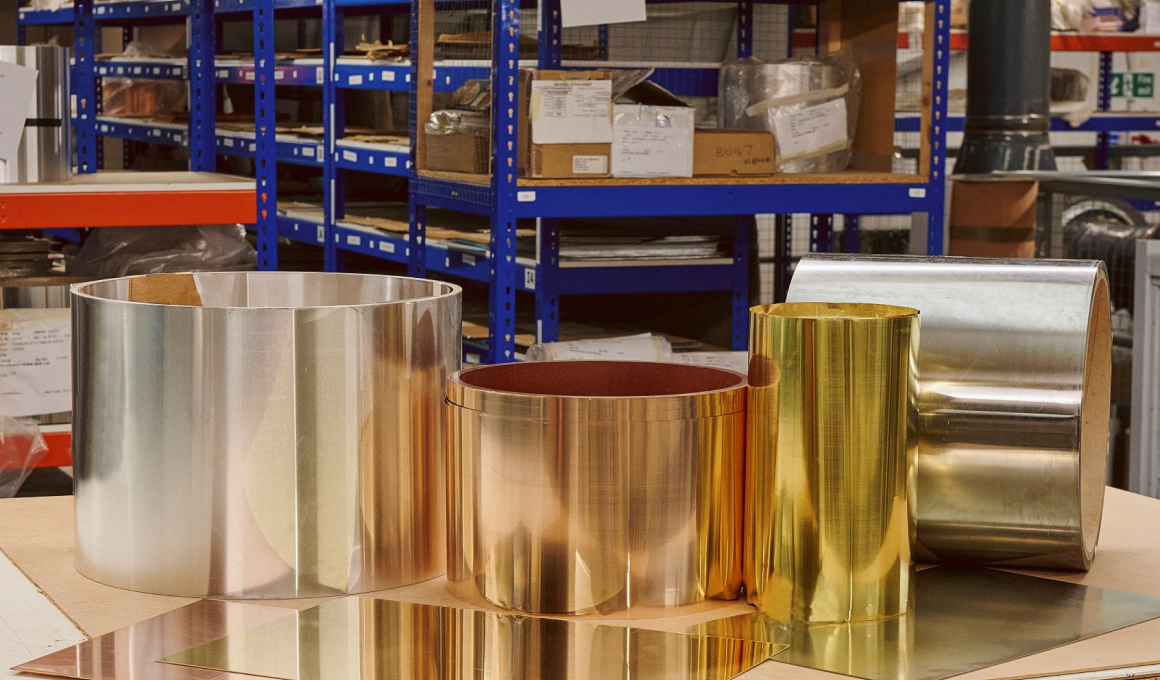 1
1
Qualitetch offer a huge range of metals for etching including: Stainless Steels, Carbon Spring Steels, Copper, Brass, Nickel Silver, Mild steel, Phosphor Bronze, Silver, Beryllium Copper, Aluminium, Nickel, Mu Metal, Alloy 42, Alloy 52 & Many Others.
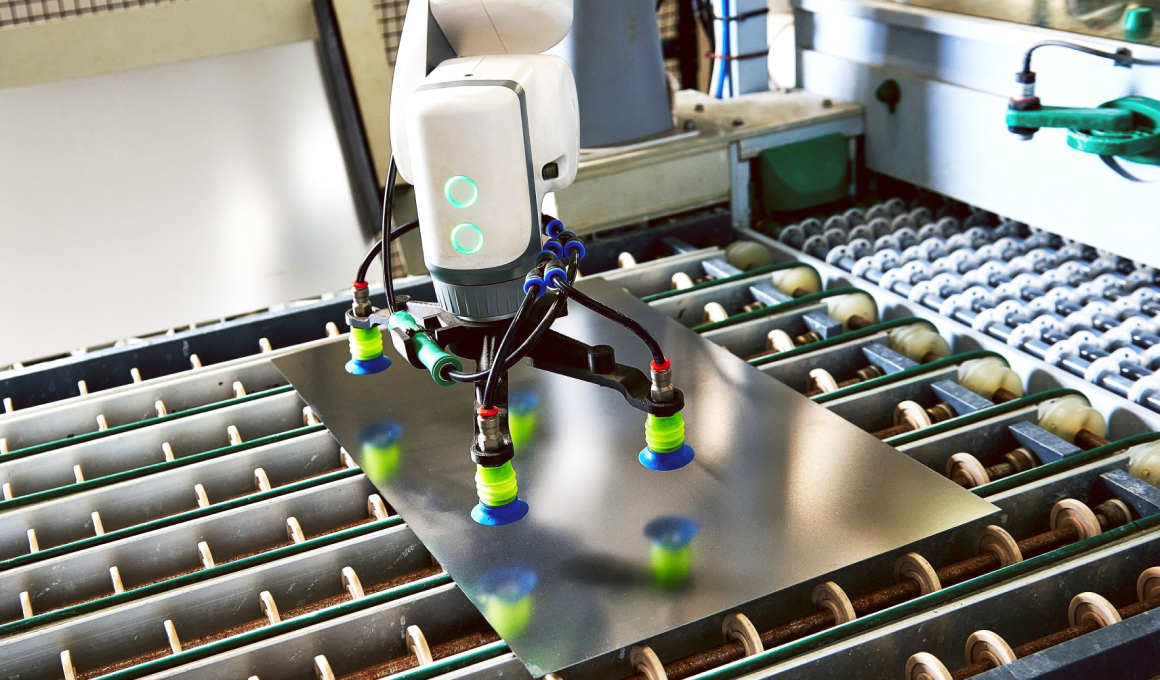 2
2
In order to ensure perfect parts every time, we need to clean the sheet metal to remove any impurities from the sheets surface before manufacturing your designs. This involves passing the metal sheets slowly through acid or alkaline solutions and rinsed prior to laminating, printing and developing.
 3
3
Metal cleaning involves passing the sheets slowly through conveyorised acid or alkaline solutions and rinsed clean prior to the lamination, printing and developing stages, depending on the sheet metal choice required.
 4
4
Once cleaned the metal sheets are coated with a UV sensitive photo resist, which melts to sheet in preparation for the printing process.
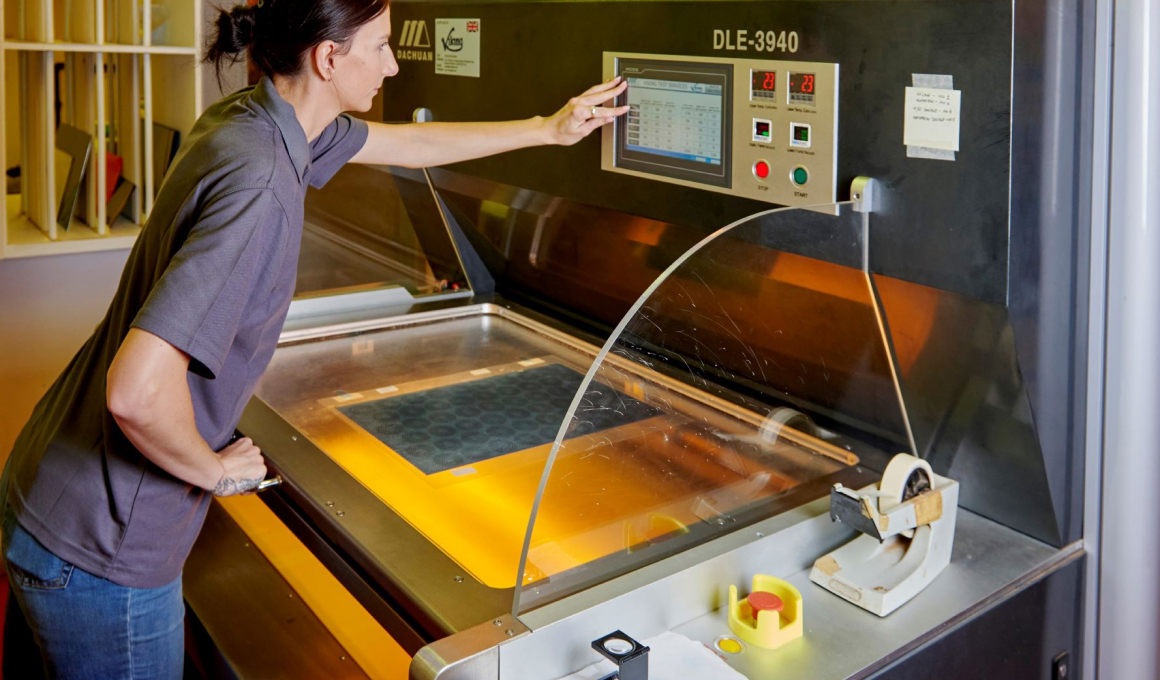 5
5
The printing process involves us taking your chosen profile design and applying it to a two sided top and bottom acetate photo film mask, that we then print your design onto the UV sensitive photo resist.
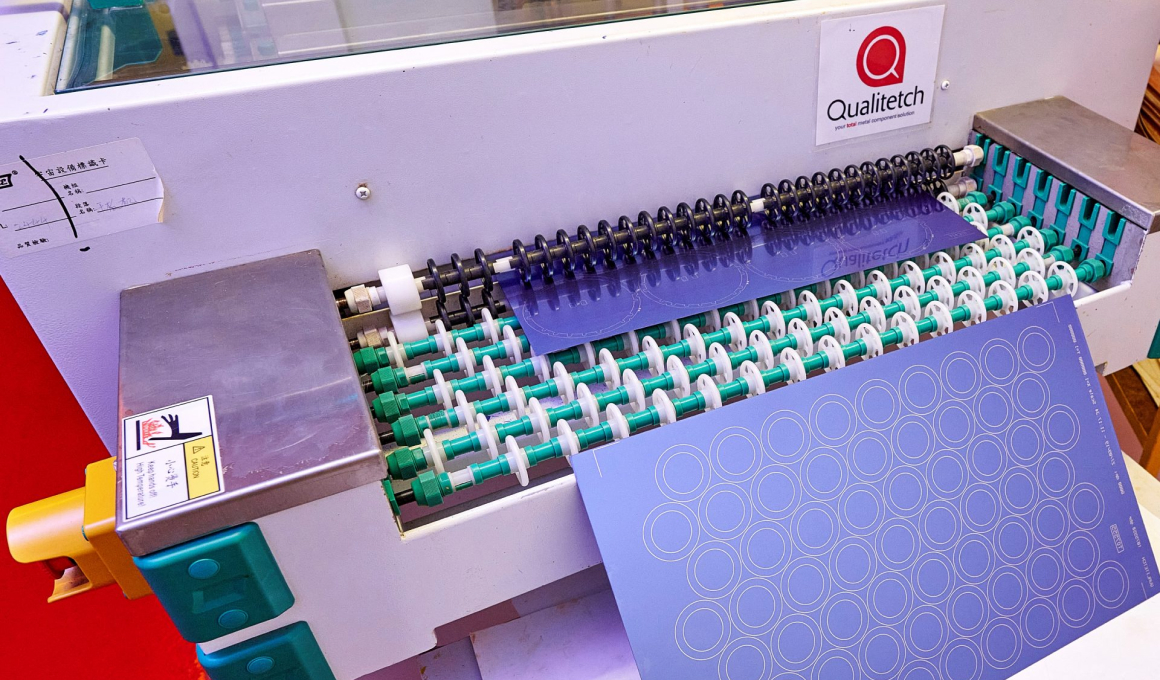 6
6
Once the metal sheet is printed with your chosen design, we then need to develop the sheet. This process effectively washes away the fine lines of the profile we are cutting, leaving raw metal track lines ready for the etching process to work it's magic very precisely.
 7
7
The etching process itself is an acid, usually ferric chloride, that effectively eats it's way through the metal at a known rate to ensure precision and targeted only in the areas you wish to remove, such as the profile track lines or other holes and features such a mesh. The rest of the sheet is masked by the UV photo sensitive blue resist, to protect the metal from the etchant until the parts are complete. This can be a very useful in a manufacturing process as the design can be very complex or include tabs or half etch fold bend lines at no added cost as you simply print your design rather than needing expensive machining time. Following an on-line dimensional check, all that is then required, is for us to strip and remove the UV photo sensitive resist coating and the parts are ready for full QA Inspection.
 8
8
At Qualitetch we offer various levels of QA inspection depending on our customers needs, as we supply both major blue chip businesses all over the world as well as smaller local businesses and anywhere in-between, as the photo etching process is very versatile. We have various automated optical equipment to ensure you parts are accurately supplied to your drawings. We also offer levels of inspection including 100% inspection, PPAP levels, batch inspection, First article inspection (FAIR) and bespoke customer inspection as required.
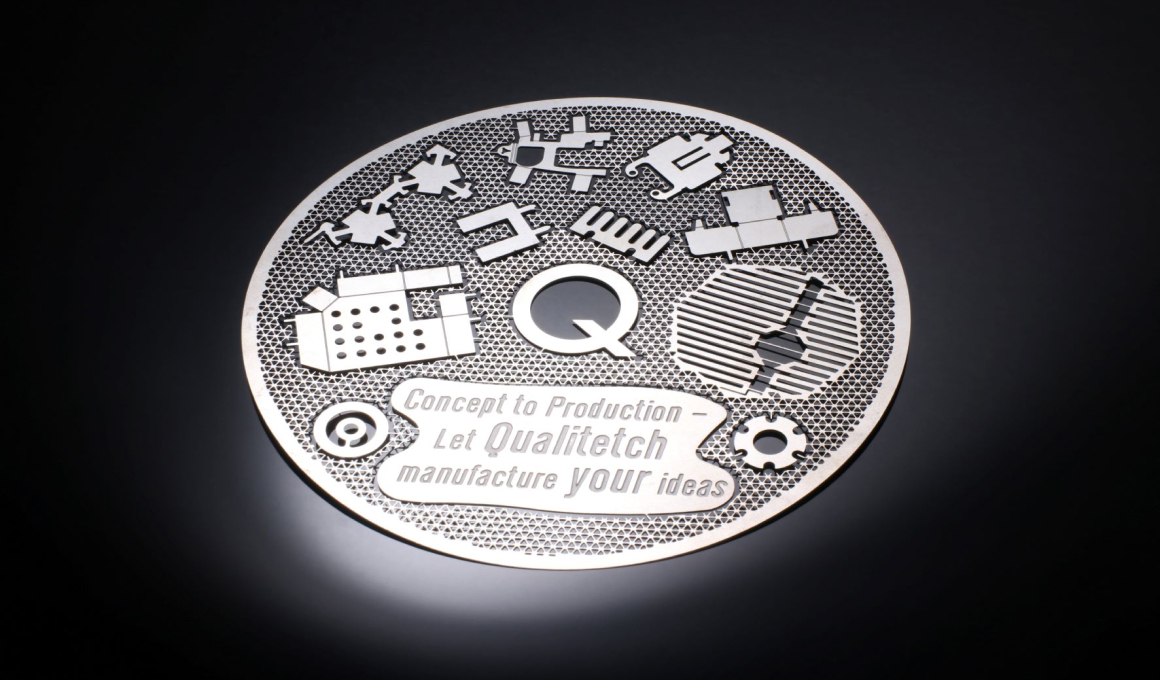 9
9
Once the parts are fully inspected and passed they are ready to be packed and sent to the customer, or for additional processes such as plating, forming, soldering, spot-welding, machining, EDM wire erosion, heat treatment or any other bespoke services required, such as assembly.
This process is highly accurate and cost effective, with high definition results every time. Photo etched steel retains all existing properties thanks to this process, which leaves the metal both burr- and stress-free.
Once the design has been finalised, we can then produce a profile artwork film to print the image onto the metal sheets UV resist. After developing the sheets are then passed through a chemical bath using an etchant: ferric chloride.
The finished parts are then cleaned and dried, removing any trace of photo-resist and chemicals, before being approved dimensionally by our skilled technicians using the latest automated inspection equipment. Parts and components can then be plated or finished to prevent corrosion and rust or simply for decorative effect.
For more information about how our steel etching services can make a difference to your products, please give us a call today on 01354 658787.
Bipolar Plate manufacture & hydrogen fuel cells & Electrolysers through chemical etching
View the ServiceWe offer a wide range of engineering solutions and process methods to suit your project needs.
View the ServiceStainless steel photo chemical etching is one of the most common materials we etch.
View the ServiceSilver is one of the most common precious metals around the world
View the ServicePhosphor bronze chemical etching is a highly versatile and adaptable material for manufacturing your quality precision metal parts.
View the Service
